|
Head-Smashed-In
Buffalo Jump World Heritage Site in Alberta Canada, is possibly the
oldest, largest and best preserved of the many buffalo jump sites across
the Western Plains. This site preserves and interprets the significance
of an ancient communal hunting ground used by the Plains People for
nearly 6,000 years. Head-Smashed-In Buffalo Jump was designated a World
Heritage Site by UNESCO in 1981.
|
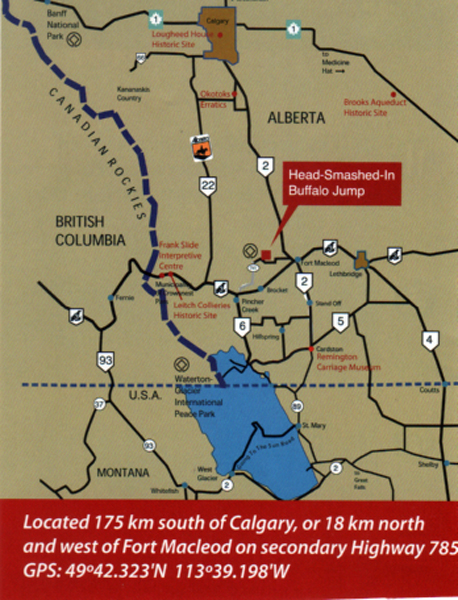 |
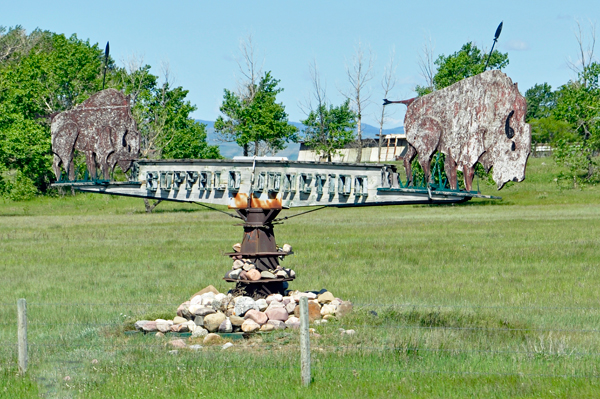 |
 According
to one of the Blackfoot oral traditions, a very young boy wanted to
witness the plunge of countless buffalo as his people drove them over
the sandstone cliff. Standing under the shelter of a ledge, he watched
the great beasts fall past. The hunt was unusually good that day. As
the bodies mounted, the child became trapped between the animals and
the cliff. When his people came to do the butchering, they found the
child with his skull crushed by the weight of the buffalo carcasses. According
to one of the Blackfoot oral traditions, a very young boy wanted to
witness the plunge of countless buffalo as his people drove them over
the sandstone cliff. Standing under the shelter of a ledge, he watched
the great beasts fall past. The hunt was unusually good that day. As
the bodies mounted, the child became trapped between the animals and
the cliff. When his people came to do the butchering, they found the
child with his skull crushed by the weight of the buffalo carcasses.
This is why they named the buffalo jump Head-Smashed-In. |
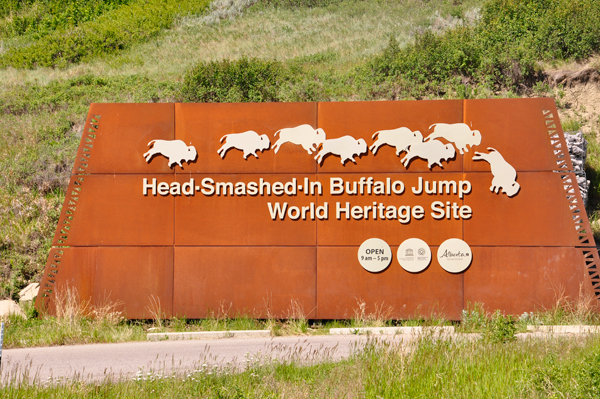 |
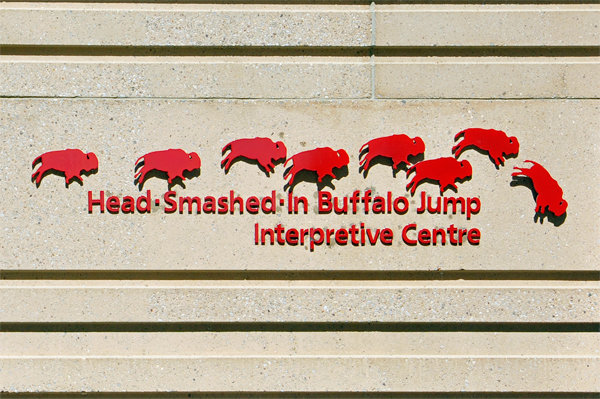 |
Below: Head-Smashed-in
Buffalo Jump Interpretive Center shown from a distances and at the entry. |
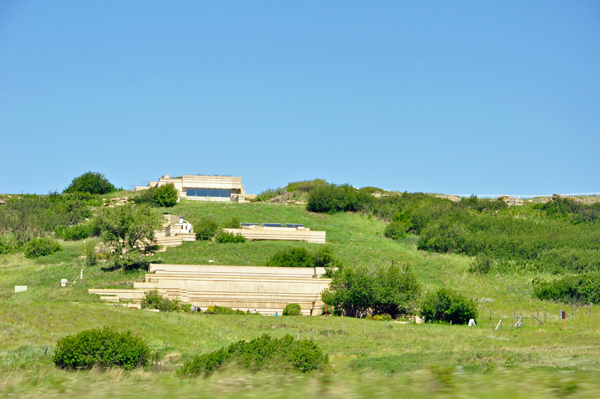 |
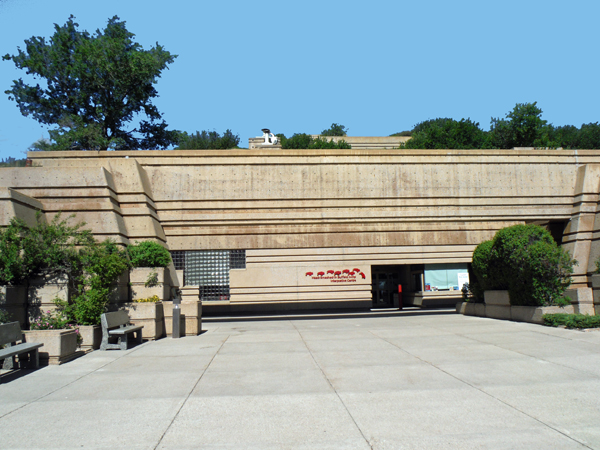 |
 This
is page one - Inside The Interpretive Center where the two
RV Gypsies spent about 1-1/2 hours on a self-guided tour of the exhibits
before going outside (which is page two on this site and can be reached
through the link at the bottom of this page). Note: The two RV Gypsies
did not eat any Buffalo served here or anywhere else. This
is page one - Inside The Interpretive Center where the two
RV Gypsies spent about 1-1/2 hours on a self-guided tour of the exhibits
before going outside (which is page two on this site and can be reached
through the link at the bottom of this page). Note: The two RV Gypsies
did not eat any Buffalo served here or anywhere else.
|
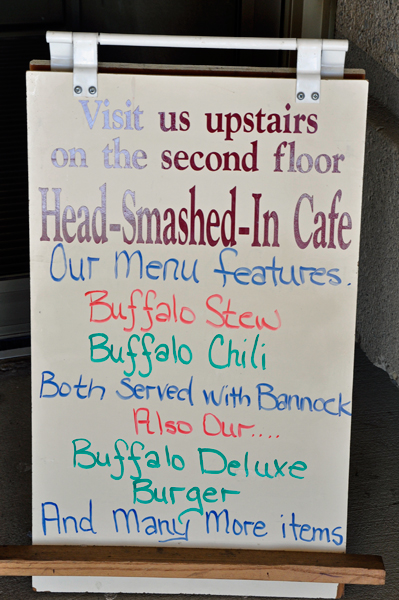 |
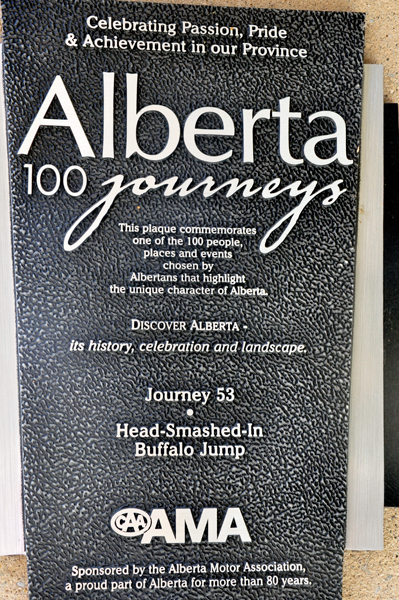 |
Below: Three
of the many Blackfoot Legend Paintings done by school children, as explained
in the sign below. |
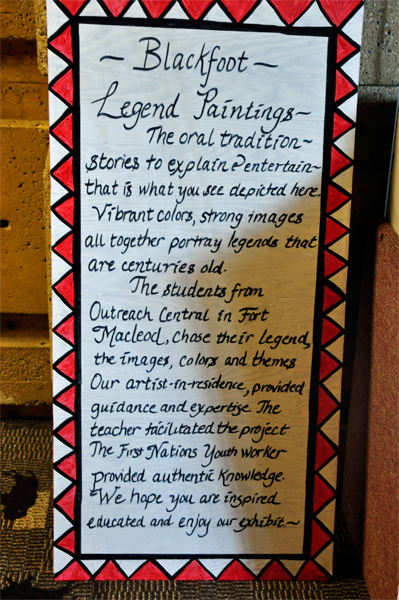 |
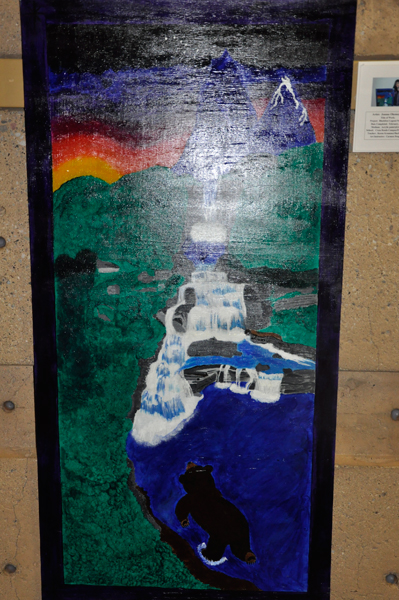 |
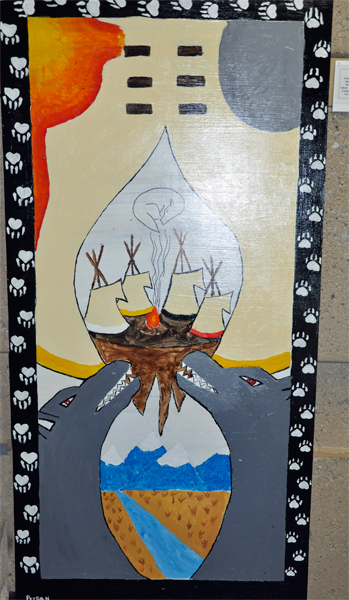 |
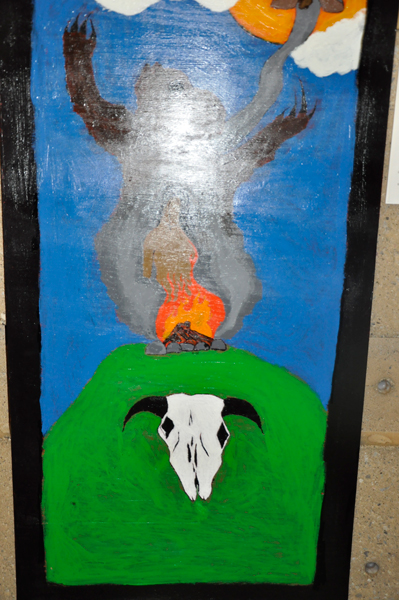 |
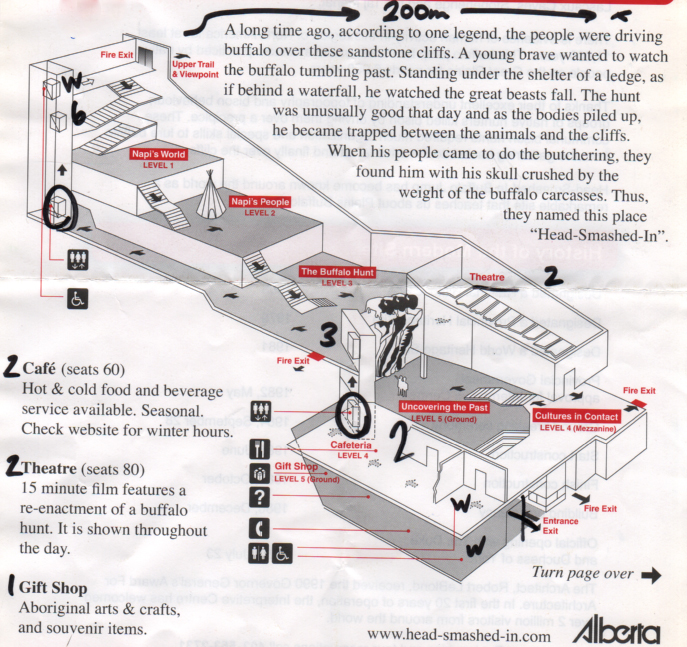 |
Below: The 3-section photo shown below was actually a video screen where a
movie was showing about the ancient buffalo hunting culture and how
the Plains People survived for more the 5,000 years before the arrival
of the Europeans. It was really cool to watch because the pictures moved
from left to right across the 3-section screen. |
|
Below:
The Interpretive Center had buffaloes on the carpet and informative
signs everywhere. |
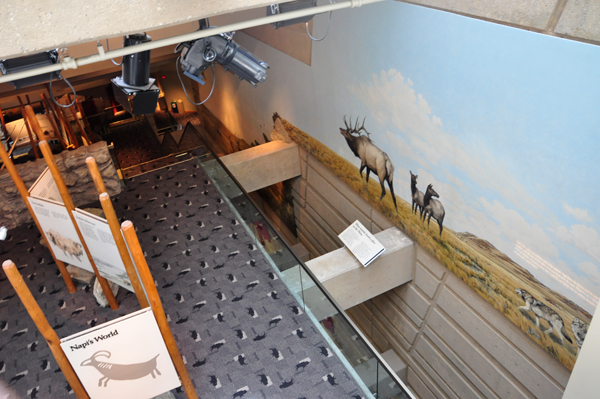 |
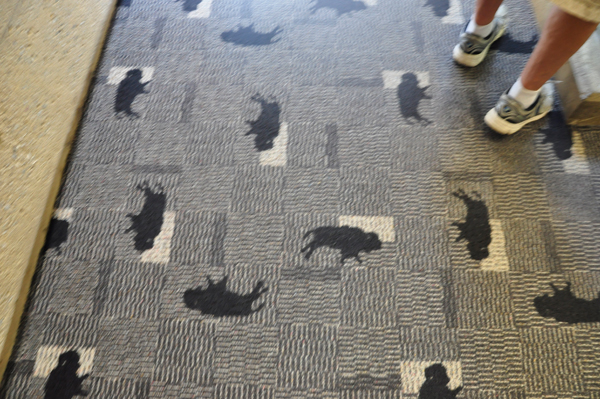 |
Below: Signs
and movies explained about the delicate ecology of the Northwestern
Plain, the geography, climate and vegetation of the region, plus the
lifestyle of the early Plains People, their rich culture including food
gathering, ceremonies and family life. |
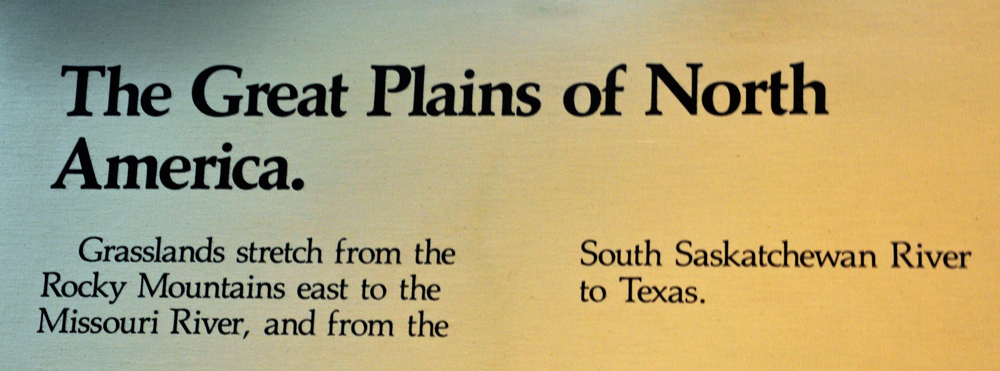 |
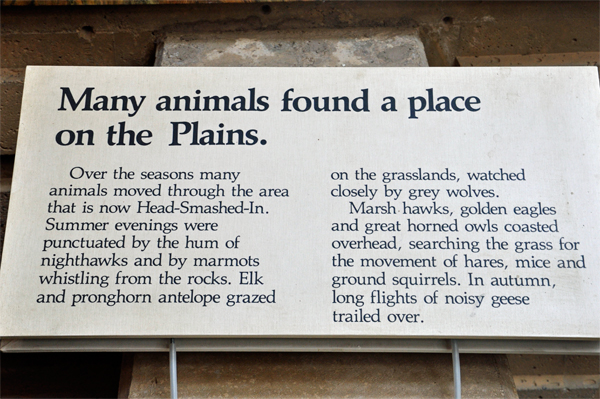 |
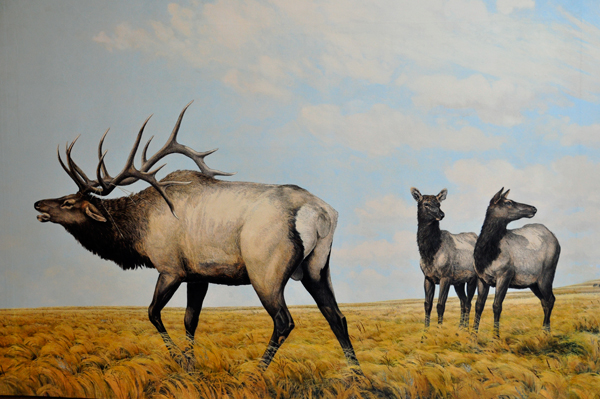 |
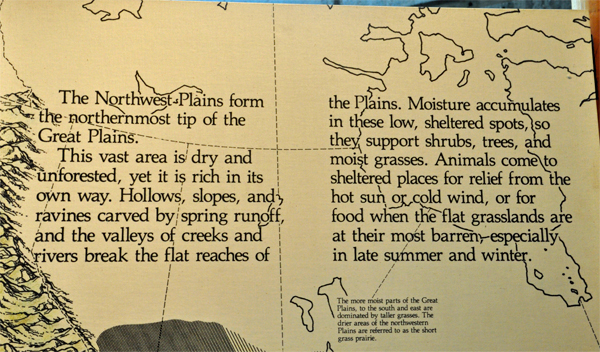 |
 |
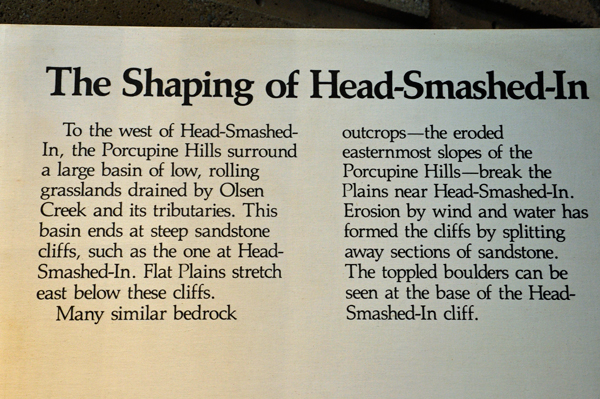 |
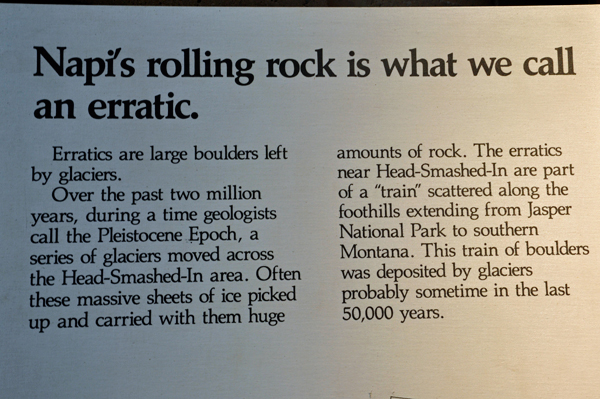 |
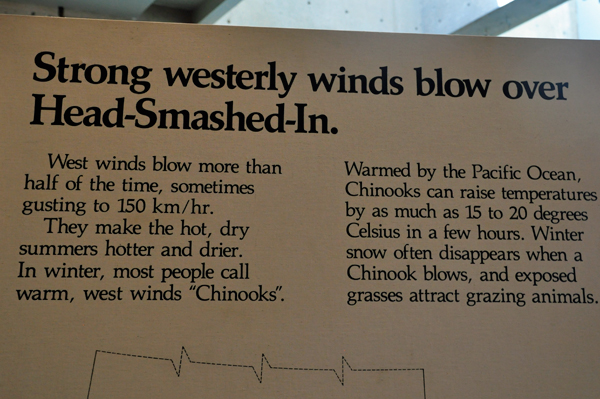 |
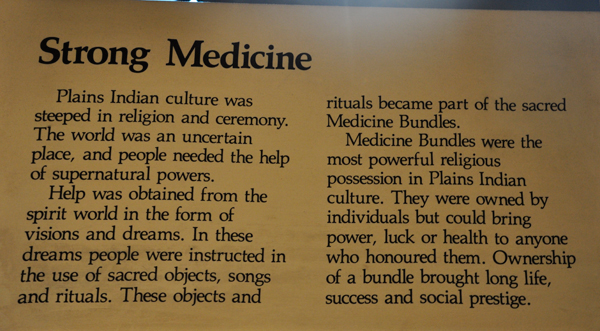 |
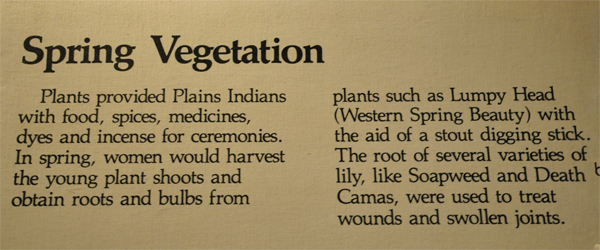 |
 |
Below: Information
was even displayed via lighting on big rocks throughout the Interpretive
Center. Sometimes the words fell off the surface of the rock and could
not be read, as shown below. |
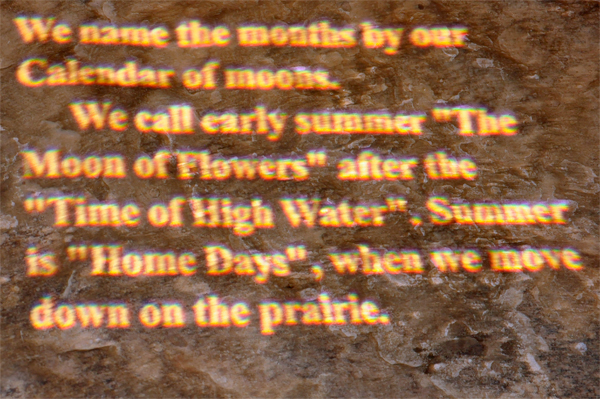 |
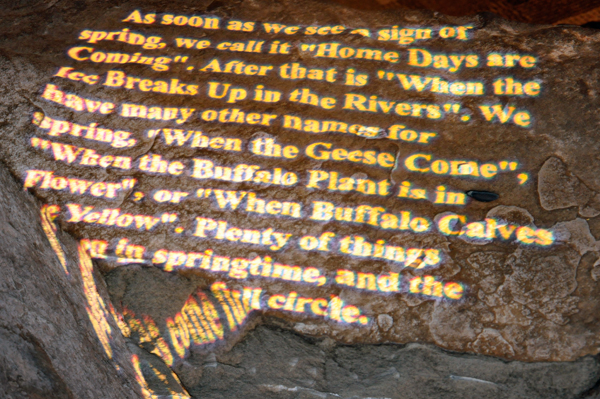 |
Below: A full
size tipi (teepee) on the first floor, and a replica of a tall cliff
with some buffalo on top of the cliff about to fall off to their death. |
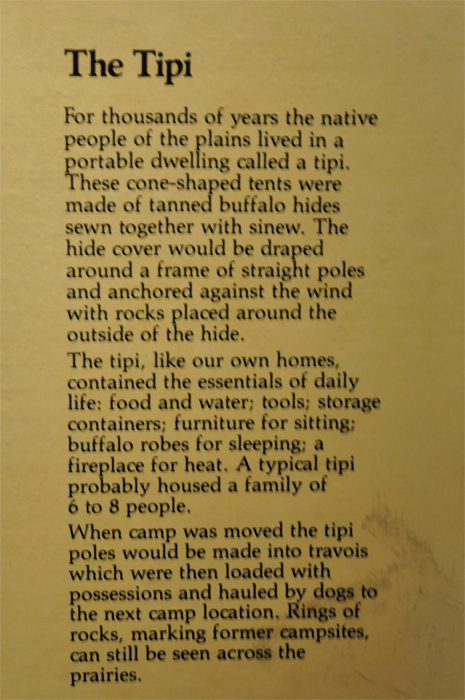 |
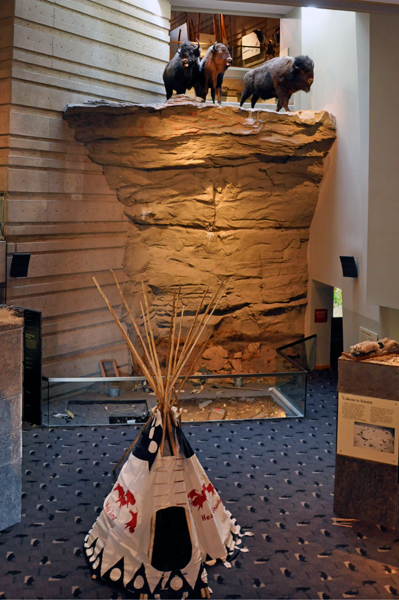 |
Below: Buffalo
on top of the cliff as seen from the first floor of the Interpretive
Center, and butt shots as seen from the second floor. |
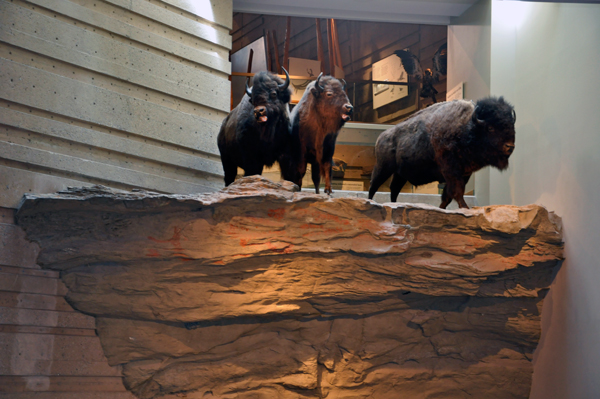 |
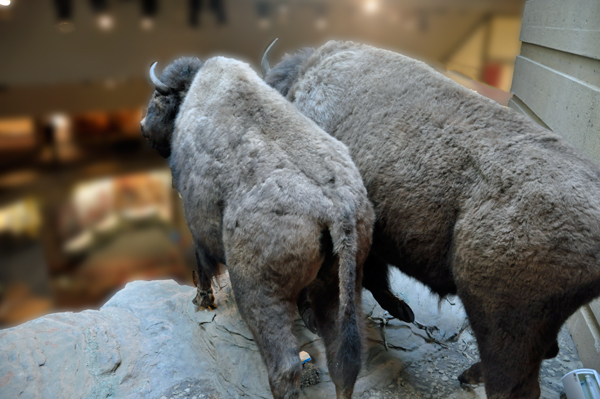 |













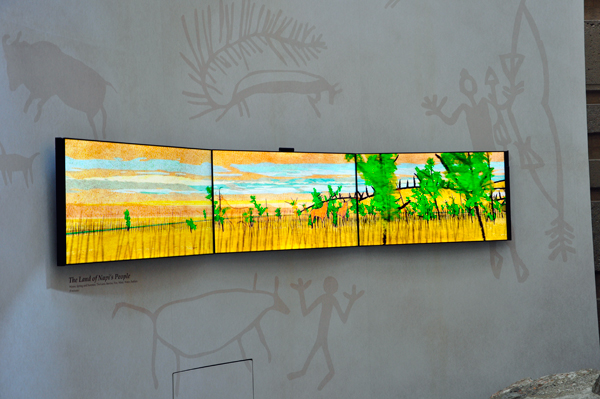



















 According
to one of the Blackfoot oral traditions, a very young boy wanted to
witness the plunge of countless buffalo as his people drove them over
the sandstone cliff. Standing under the shelter of a ledge, he watched
the great beasts fall past. The hunt was unusually good that day. As
the bodies mounted, the child became trapped between the animals and
the cliff. When his people came to do the butchering, they found the
child with his skull crushed by the weight of the buffalo carcasses.
According
to one of the Blackfoot oral traditions, a very young boy wanted to
witness the plunge of countless buffalo as his people drove them over
the sandstone cliff. Standing under the shelter of a ledge, he watched
the great beasts fall past. The hunt was unusually good that day. As
the bodies mounted, the child became trapped between the animals and
the cliff. When his people came to do the butchering, they found the
child with his skull crushed by the weight of the buffalo carcasses.


